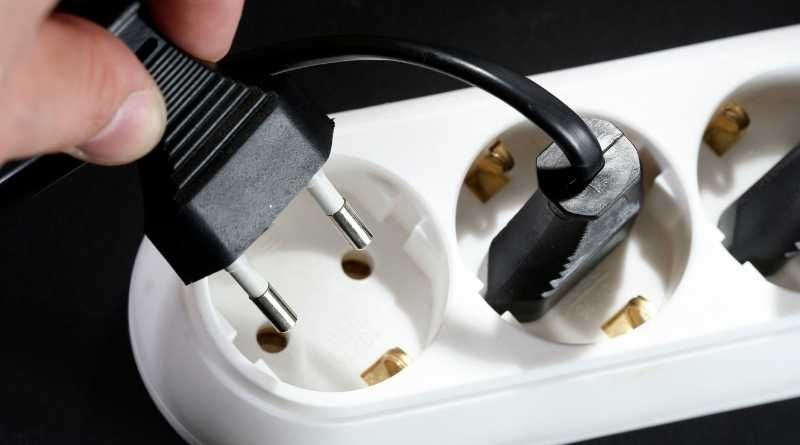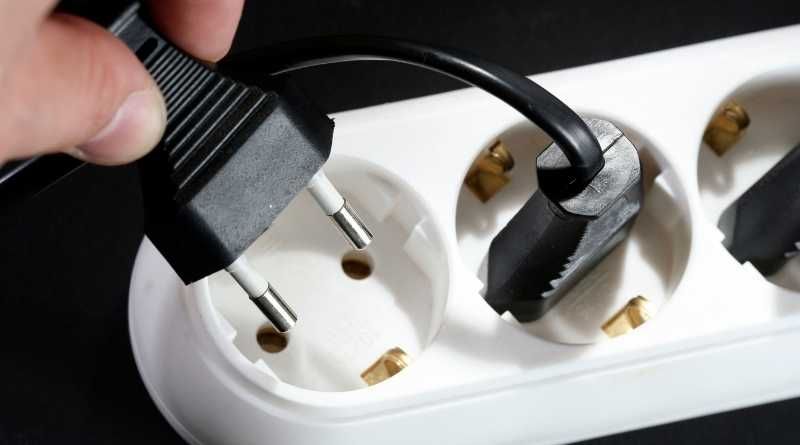Surge protectors are designed to help protect your valuable electronic equipment from damaging voltage and current spikes caused by things like lightning, faulty wiring, and malfunctions.
But, what if you plug in a surge protector, but it isn’t grounded? Will it still work? Let’s find out!
Surge protectors do not work if there is no ground. If there is no ground, surge protectors will not be any better than multi-prong outlets for protecting electronics and appliances.
Table of Contents
What If My Surge Protector Is Not Grounded?
Surge protectors are designed to stop the flow of electricity at the source in order to protect your computer, TV and other sensitive electronics from any surge in electrical current. If your surge protector isn’t grounded, it won’t protect you from surges.

How To Tell If My Surge Protector Is Grounded or Not?
When it comes to surge protectors, the individual components are not easily recognisable. In cheap protectors, you can only see a lightbulb flickering in the switch. This indicates that some of the internal components are failing and need to be replaced or fixed.
Cheaper surge protectors are not easy to check for functionality. When you turn them on, the only indication that there is something wrong with them is a flickering light inside the switch.
Another common indicator is that the power strip light stops working because the circuit has gone bad. When this happens, you have a safety device without power – and without your knowledge!
Many high-quality surge protectors will have a separate indicator light on a dedicated circuit – separate from the power switch – to make sure you always know when your devices are protected from surges.
Is It Safe To Use An Ungrounded Surge Protector?
The answer is that it is not a good idea to use an ungrounded surge protector. An ungrounded surge protector can be dangerous if you plug it into an ungrounded outlet.
If the power surges through your home or office, there is no ground through which the surge can travel. Therefore, it will go through the metal shell of the ungrounded surge protector and through sensitive electronics. This can cause damage to your electronics.
Should I Ground My Surge Protector or Repair It?
Surge protectors are a necessity to protect your electronic devices from power surges and spikes. However, if your surge protector isn’t grounded, it’s best to hire a professional to fix it or purchase a brand new one. Why is this so? Because if it is broken, you could be at risk of fire or electricity overload, which could cost you more in repairs or replacements.
How Long Should You Keep A Surge Protector?
If you live in an area prone to lightning strikes and brownouts, a surge protector is a must-have for your home electronics.
Surge protectors work by preventing power surges from entering your home’s electrical system, and even if the power surge dissipates harmlessly through the device, it will cut the flow of electricity to your home’s outlets, preventing electrical power surges from damaging your devices.
But the surge protectors themselves wear out over time, and should be replaced every three to five years, or more frequently (every 2 years) if they’re subjected to frequent power surges.
How To Test A Surge Protector?
Surge protectors are designed to protect electronic devices from power surges and nearby lightning strikes. But, how do you know they’re working?
Surge protectors are designed to absorb excess power in a power surge. Also, they may even protect against nearby lightning strikes. However, surge protectors are not perfect. They can be damaged by excess voltage, and they’re not effective against power sags and brownouts.
In this section, we show you how to test a surge protector and what you can expect if it’s working.
LED Indicators
It is probably in your best interest to replace a surge protection unit if you have had it for more than a few years.
When replacing one, look for a surge protector that is equipped with multiple LED indicators that will alert you when it fails to protect your electrical devices (as mentioned above). This is probably the most reliable way to tell if your device is still protected or not.
These days, high-end surge suppressors have LED indicators that are very easy to see, and some even have audible alarms that let you know when the surge protection joules have run out.
Each surge suppressor model is typically designed with a certain amount of surge protection joules, and once it runs out, usually it makes you aware via an LED indicator that it no longer can protect your devices. So it’s probably time to get a new one.
LED Indicators Aren’t Always Accurate.
When you feel like your surge protector is no longer protecting your stuff, or you hear an alarm from it, you should probably buy a new one, without having to learn how to test a surge protector.
Because each surge protector has a built-in sensor that constantly tests for its surge protection capabilities, an alarm will sound when it can no longer protect your devices.
Best deals for surge protectors come from the best brands like Tripp lite, APC, Belkin and so on. And there’s no real way to test surge protectors physically or scientifically, so the best bet is usually to get it from well-known manufacturers.
Conclusion
If the surge protector is not grounded, it will still work, but it is dangerous and won’t protect your electronics in case of a power surge.
The ground wire is there for a very small current flow to the panel. This wire protects the devices from a power surge by allowing current to flow. It also works with devices without a ground wire.
If you don’t have a ground wire, call an electrician to fix it or buy one instead of letting your expensive devices go bad in case of a power surge.


